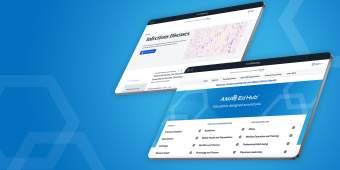Why innovation workshops only get you halfway there

Innovation workshops have become a popular way for companies to jumpstart innovation efforts in-house. And with good reason: we’re in a period of accelerating change. The organizations that can stay relevant are the ones that find ways to consistently create new value for their customers-–in other words, the ones that figure out how to innovate.
The problem: only one in 20 innovations actually succeeds. Innovation is essential, but most organizations are not optimized for it. To learn the essentials of innovation, many leaders enroll in innovation workshops.
But, as many organizations learn after completing these workshops, a workshop only lets you scratch the surface of innovation. To actually innovate consistently, on an ongoing basis, organizations must change how they operate internally, often in profound ways. That’s not easy.
If you’re prepared to invest the time, you can use an innovation workshop to launch a new era of innovation at your organization. In this piece, we’ll explain how. First, though, let’s take a look at what to expect during the workshop itself.
What is an innovation workshop?
While there's no single format that innovation workshops take, they tend to consist of the following:
Introduction to and explanation of design thinking principles and why embracing these principles yields innovative outcomes
Discussion of how to apply design thinking principles to actual problems attendees are having
Practical sessions where attendees apply design thinking principles to their problems to brainstorm creative solutions
Beyond those basics, workshops vary greatly depending on who is hosting, who’s in attendance, whether they are in-person or remote, and how long they last (a full day or just a couple of hours? One session or a series? Etc.).
There's no “right” workshop type, but attendees hoping to bring innovative practices back to their organizations should remember that “the workshop is not the work.” In other words, innovation workshops can offer helpful guidance on how to embrace innovation practices, but the actual work of embracing those practices happens after the workshop is over.
This isn’t unique to innovation workshops, of course. In any situation where you’re learning something new, the classroom portion is usually just the first step that jumpstarts the rest of the journey. To learn the piano, for example, you must spend much more time practicing than sitting in lessons.
Innovation workshops can help organizations jumpstart their innovation efforts by explaining at a high level how innovation works and giving attendees space and time to practice some of the behaviors and mindsets that lead to innovation, including…
Questioning assumptions and reframing problems: Often, getting “unstuck” is just a matter of identifying assumptions that have led you to where you are and reassessing their accuracy. Once you shed underlying assumptions, it becomes easier to reframe problems.
Brainstorming: In business settings, we’re often conditioned to find THE solution. But the practice of innovation requires identifying and considering many possible solutions, moving toward the best one collaboratively and iteratively. Innovation workshops often make time for developing creative ideas.
Identifying new opportunities: When you reframe a problem and commit to brainstorming creative solutions, you will likely identify new opportunities. The workshop facilitator can help you recognize when you’ve come across something promising and guide you toward how to bring this opportunity back to your organization.
In short, an innovation workshop has similarities with many other types of continuing education you might enroll in. While the workshop itself can add substantial value, the bigger challenge is often bringing what you learned in the workshop back to your organization and using those learnings to improve day-to-day operations.
Let’s take a look at what that process involves.
What happens after an innovation workshop?
After an innovation workshop, attendees may return to their organizations energized and full of innovative ideas. But then business as usual gets in the way of actually putting those ideas into practice. And for most organizations, “business as usual” does not leave room for innovation.
That’s because businesses are built to maintain their existing operations. They’ve been optimized to produce specific products or services in specific ways. That very optimization is what often thwarts the innovation process because innovation requires trying new things. It’s impossible to try new things if your staff consists of just enough people to keep the ordinary parts of the business running.
This is why actually implementing the practices you learn during an innovation workshop can be so difficult.
So what needs to happen to bring the practice of innovation to an organization? At a high level, the organization needs to embrace a culture of innovation, which is typically characterized by the following:
Accepting failure
Embracing experimentation
Collaborating by default
Creating an environment of psychological safety
Committing to learning on an ongoing basis
These aren’t the only essential attributes of innovative cultures, though, and understanding how to leverage these often permissive-seeming behaviors and mindsets to drive innovation is one of the biggest challenges of making a culture of innovation work.
For example, it’s important to create an environment where it’s okay for ideas to fail but also where everyone on the team is technically competent in their work. Trying something new that fails is valuable because you can learn from it; performing basic work tasks incorrectly is damaging.
Similarly, while ongoing experiments are necessary to learn new things, innovative leaders must also develop discipline around when to end experimentation and push forward with developing an idea. And while collaboration is essential to drive innovation, each team member must also be accountable for the work they need to do to move the group forward.
In a practical setting, the transition from workshop to implementation often ends with roadblocks in the following stages:
Moving from ideation to prototypes
Moving from prototype to product development
Moving from product development to new product initiatives
Evaluating new product performance
What's more, leaders who are new to innovation may find it difficult to communicate a product roadmap to engage stakeholders and facilitate partnerships. One core tenet of innovation is that products must evolve and respond to their users’ needs and wants, which means a long-term product roadmap that lays out specific features doesn’t make sense.
So what's an innovation-minded business leader to do?
One of the most effective ways to bring the practice of innovation to an existing organization is to enlist the help of an innovation consultant or partner.
Work with an innovation consultant or partner
An innovation consultant or partner can help implement the behaviors and mindsets that drive innovation in an actual workplace. This partnership may take several forms:
The partner can act as a sort of project manager for the project of innovation, facilitating the individual activities required to perform the work of product innovation and also guiding your team through the stages of product development––for example, when to conclude a round of user research, when to stop brainstorming and start prototyping, when to end internal discussions on a given feature of function.
The partner can liaise with executives and other stakeholders to win buy-in for the innovation work and to communicate about progress and next steps. As someone who has been through the entire process of product development using a product innovation / design thinking methodology, they can help set and manage expectations, answer “product roadmap” type questions, and generally keep enthusiasm high for innovative approaches.
The partner can act as an ongoing mentor and educator for the internal team tasked with innovation, teaching them methods and practices that can drive innovation. This is particularly valuable in organizations that have determined they want to embrace a culture of innovation but need guidance in getting there.
In some cases, partnerships might involve partnering with an entire team of experienced innovators who can work alongside internal subject matter experts and practitioners to model and teach the style of work essential to ongoing innovation.
Whichever form works best for your organization, there's real value in having a person dedicated to managing your innovation work: a recent study found that a fully optimized product manager can boost an organization's profits by more than 34 percent.
Work with TXI as your innovation partner
TXI has been building innovative products for decades. We’re able to consistently create innovative products for our clients because we embrace the principles of product innovation and design thinking.
We’ve got experience working as consultants, partners, and mentors with leaders and organizations interested in embracing a culture of innovation. And we recently launched an innovation workshop series of our own, so we’re familiar with the ways workshops can jumpstart innovative practices and strategies for ensuring innovation-essential behaviors and mindsets are embraced throughout a team and organization.
Get a better sense of some of the work we’ve done, read about our culture and approach, or reach out to start a conversation about bringing innovation to your organization.
Published by TXI in Product Innovation

Let's shape your insights into experience-led data products together.


